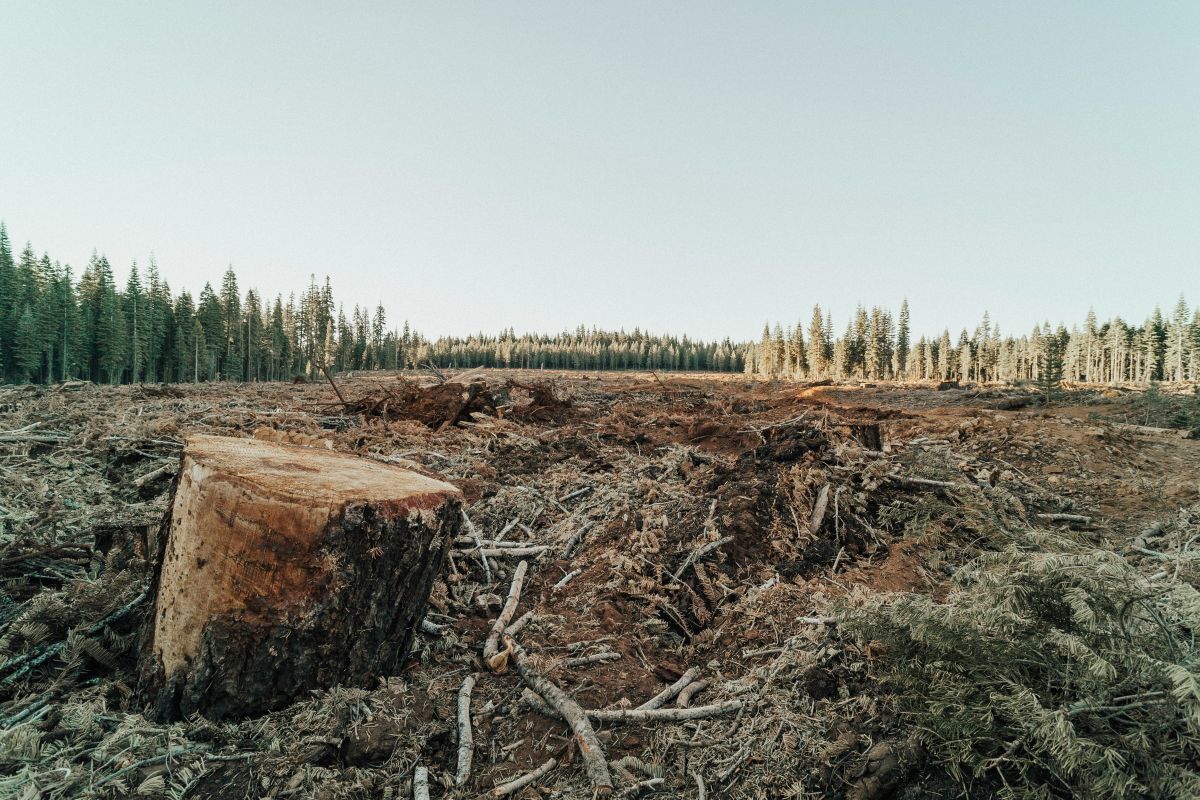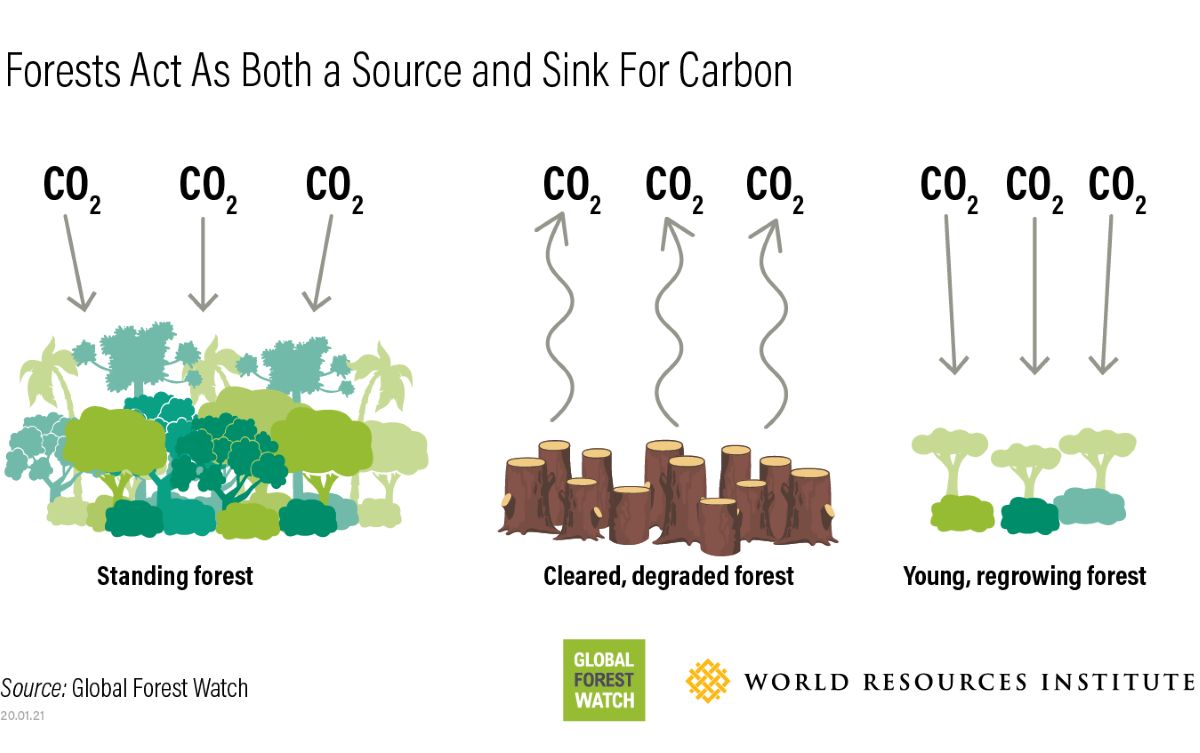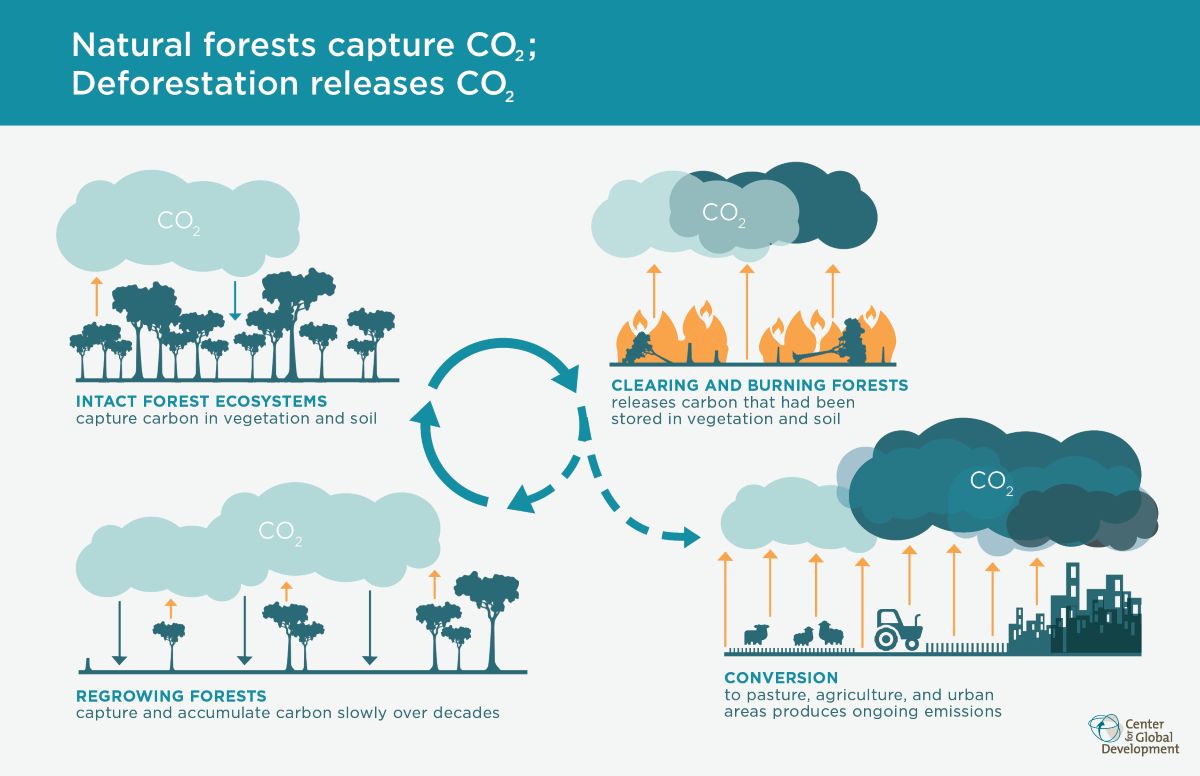
Watch short for this article (5 slides)
The Breathing Planet Under Pressure: Restoring Earth's Weakening Carbon Sinks
Our planet possesses remarkable natural systems for regulating atmospheric carbon dioxide (CO₂), the primary driver of climate change. Forests, soils, and oceans act as vast **carbon sinks**, absorbing and storing enormous quantities of CO₂ and buffering us against the worst impacts of rising emissions. However, these critical planetary regulators are under immense strain. Relentless deforestation, degrading agricultural practices, warming and acidifying oceans, and increasingly severe wildfires are compromising their ability to sequester carbon. As these natural sinks weaken, the race is on to find effective ways to protect, restore, and even enhance them, alongside the paramount need to drastically cut greenhouse gas emissions at their source. This article delves into the science of how these carbon sinks function, the specific threats they face, and the promising but challenging efforts underway to restore their vital role.

Nature's Carbon Balancing Act: How Sinks Sequester CO₂
Understanding how carbon sinks work reveals why they are so crucial and vulnerable:
1. Forests: The Photosynthetic Powerhouses
- Mechanism: Through photosynthesis, trees and other plants absorb atmospheric CO₂. Using sunlight as energy, they convert CO₂ and water into glucose (sugar) for growth and oxygen, which is released. The carbon is incorporated into their biomass – trunks, branches, roots, and leaves.
- Storage: Carbon remains stored in this biomass for the lifetime of the plant. When plants die, some carbon is released through decomposition, while a significant portion can be transferred into the soil organic matter pool by microbial action on roots and litter. Old-growth forests store vast amounts of carbon accumulated over centuries.
- Significance: Global forests currently absorb roughly 7.6 billion metric tons of CO₂ annually, playing a massive role in mitigating climate change, although this capacity is threatened. (UNEP - State of Finance for Nature)
2. Soils: The Underrated Carbon Reservoir

- Mechanism: Soil organic carbon (SOC) forms from decomposing plant litter, root exudates (sugars released by living roots), and microbial biomass. Microorganisms break down organic matter, incorporating stable carbon compounds into the soil structure, often binding with mineral particles.
- Storage: Healthy soils represent the largest terrestrial carbon pool, holding an estimated 2,500 billion tons of carbon – more than three times the amount in the atmosphere and four times the amount in all living plants and animals combined. Factors like climate, vegetation type, soil texture (clay content helps stabilize carbon), and land management practices heavily influence SOC storage capacity and stability.
- Significance: Even small percentage changes in global SOC levels can have enormous impacts on atmospheric CO₂ concentrations.
3. Oceans: The Vast Chemical and Biological Sink
Oceans absorb roughly 25-30% of anthropogenic CO₂ emissions through two primary mechanisms:
- The Solubility Pump (Physical/Chemical): CO₂ naturally dissolves from the atmosphere into surface seawater. Colder, denser water can hold more dissolved CO₂, particularly in polar regions. As this surface water cools and sinks, it transports dissolved carbon to the deep ocean, where it can remain sequestered for centuries or millennia.
- The Biological Pump (Ecological): Marine phytoplankton (microscopic algae) perform photosynthesis at the ocean surface, converting dissolved CO₂ into organic matter. When these organisms die, or are consumed and excreted by other marine life, a portion of this organic carbon sinks into the deep ocean as "marine snow." Some reaches the seabed sediments, effectively locking carbon away for geological timescales. Organisms that form calcium carbonate shells (like coccolithophores and shellfish) also play a role in the long-term carbon cycle, although ocean acidification complicates this process.
- Significance: The ocean is the largest active carbon sink on Earth, but its uptake rate is being affected by ongoing chemical and physical changes.
Under Siege: How Human Activities and Climate Change Weaken Carbon Sinks
Multiple pressures are degrading the capacity of these natural systems:
- Deforestation and Forest Degradation: Clearing forests, primarily for agriculture (cattle ranching, soy, palm oil), logging, and urbanization, directly removes carbon-storing biomass. Burning forests releases stored carbon rapidly. Soil disturbance during clearing also accelerates the decomposition of soil organic matter, releasing more CO₂. Forest degradation through selective logging or fragmentation also reduces overall carbon storage capacity.
- Unsustainable Land Management & Soil Degradation: Conventional agricultural practices like intensive tillage (plowing) expose soil organic carbon to oxygen, accelerating its breakdown and release as CO₂. Overgrazing, monoculture cropping, excessive fertilizer use, and soil erosion all contribute to the loss of vital soil carbon stores.
- Ocean Warming: Warmer surface waters can hold less dissolved CO₂ (reducing the efficiency of the solubility pump). Increased temperature also leads to ocean stratification – the formation of distinct layers that mix less easily. This stratification can limit the transport of nutrients from deeper waters to the surface, potentially restricting phytoplankton growth and weakening the biological pump in some regions.
- Ocean Acidification: As the ocean absorbs excess atmospheric CO₂, it becomes more acidic (lower pH). This occurs because dissolved CO₂ reacts with water to form carbonic acid (H₂CO₃), which then releases hydrogen ions (H⁺). Increased acidity makes it harder for calcifying organisms (corals, shellfish, some phytoplankton) to build and maintain their shells and skeletons made of calcium carbonate, potentially disrupting marine food webs and altering the long-term carbon cycle. (NOAA - Ocean Acidification)
- Wildfires: Climate change is increasing the frequency, intensity, and size of wildfires globally. These fires release enormous amounts of carbon stored in trees and soils directly into the atmosphere. While forests can regrow and reabsorb carbon, increasingly frequent and severe fires can shift ecosystems permanently (e.g., forest to grassland) and prevent full carbon recovery, turning historical sinks into net sources in some years.
- Permafrost Thaw: Though not one of the 'big three' sinks discussed initially, thawing Arctic permafrost (permanently frozen ground) is an emerging and critical concern. It stores vast amounts of ancient organic carbon; as it thaws due to warming, microbes decompose this material, releasing potent greenhouse gases (CO₂ and methane) in a dangerous positive feedback loop.
Restoring the Balance: Efforts to Protect and Enhance Carbon Sinks
Recognizing the urgency, numerous initiatives aim to bolster natural carbon sequestration:
1. Forest Conservation and Restoration
- Protecting Existing Forests: Preventing deforestation and degradation, especially of primary and old-growth forests (which store immense amounts of carbon), is the most immediate and effective forest-based climate solution. This requires tackling drivers like unsustainable agriculture and logging through policy, enforcement, and supply chain transparency.
- Reforestation and Afforestation: Planting trees on degraded land (reforestation) or land not previously forested (afforestation). Success depends heavily on planting ecologically appropriate species ("right tree, right place"), ensuring long-term survival and permanence, and considering biodiversity and community needs. Large-scale initiatives like the Great Green Wall in Africa and the Bonn Challenge aim to restore millions of hectares.
- Improved Forest Management: Practices like sustainable forestry, longer rotation cycles, managing wildfire risk (e.g., prescribed burns where appropriate), and controlling pests and diseases help maintain forest health and carbon storage.
2. Soil Carbon Sequestration
- Regenerative Agriculture: A suite of farming practices designed to rebuild soil health and sequester carbon. Key techniques include:
- No-Till/Reduced Tillage: Minimizing soil disturbance protects soil structure and prevents SOC oxidation.
- Cover Cropping: Planting non-cash crops between main cropping seasons protects soil from erosion, adds organic matter, and feeds soil microbes.
- Diverse Crop Rotations: Varying crops helps improve soil structure, nutrient cycling, and microbial diversity.
- Integrating Livestock: Well-managed grazing can stimulate plant growth and incorporate manure (organic matter) into soils.
- Biochar Application: Creating biochar – a stable, carbon-rich charcoal – by heating organic waste in a low-oxygen environment (pyrolysis) and adding it to soil. Biochar resists decomposition for centuries, effectively locking carbon away while potentially improving soil fertility and water retention.
3. Coastal "Blue Carbon" Ecosystem Restoration
- Focusing on Mangroves, Seagrasses, Salt Marshes: These coastal ecosystems sequester carbon in their biomass and, crucially, in underlying waterlogged soils at rates significantly higher per unit area than terrestrial forests. The anaerobic (low-oxygen) conditions in these soils dramatically slow decomposition, leading to long-term carbon storage.
- Restoration Activities: Efforts involve replanting mangroves, restoring tidal flows to salt marshes, and seeding seagrass beds, providing co-benefits like coastal protection, biodiversity habitat, and improved water quality. (NOAA - What Is Blue Carbon?)
4. Technological Carbon Removal
While natural sinks are paramount, technological solutions are also being developed:
- Direct Air Capture (DAC): Technologies that use chemical or physical processes to capture CO₂ directly from ambient air. Captured CO₂ must then be permanently stored (e.g., geologically underground) or utilized. Companies like Climeworks and Carbon Engineering are pioneering DAC, but challenges remain regarding high costs, significant energy requirements, and achieving the necessary scale.
- Carbon Capture, Utilization, and Storage (CCUS): Capturing CO₂ emissions at their source (e.g., power plants, industrial facilities) before they reach the atmosphere, then transporting and storing or utilizing the CO₂.
Challenges and the Critical Path Forward
While restoration efforts offer hope, significant hurdles exist:
- Scale and Speed: The magnitude of emissions vastly outpaces current restoration efforts. Scaling up solutions quickly is essential.
- Permanence: Ensuring stored carbon remains sequestered long-term is critical (e.g., restored forests must be protected from future logging or fire; stored CO₂ underground must not leak).
- Measurement and Verification: Accurately measuring and verifying carbon sequestration across diverse ecosystems and technologies is complex but vital for accountability.
- Cost and Funding: Large-scale restoration and technological deployment require substantial, sustained investment.
Crucially, enhancing carbon sinks cannot replace the urgent need to rapidly reduce greenhouse gas emissions from burning fossil fuels and unsustainable land use. Protecting and restoring sinks is a vital complementary strategy, not an alternative. It buys us essential time and helps buffer impacts, but stabilizing the climate fundamentally requires transitioning to a low-carbon global economy.
"Nature-based solutions are powerful allies in the climate fight, but they are partners, not panaceas. They must go hand-in-hand with deep, rapid cuts in fossil fuel emissions across all sectors." - Environmental Policy Analyst Perspective (Synthesized)
Conclusion: A Dual Imperative for Climate Stability

Earth's natural carbon sinks are indispensable components of the climate system, yet they are being systematically weakened by human activities and the very climate change they help to mitigate. Protecting remaining forests, restoring degraded soils, nurturing coastal blue carbon ecosystems, and exploring technological removal options are all critical parts of the solution. However, these efforts will be insufficient – potentially futile – without simultaneous, aggressive action to curtail greenhouse gas emissions at their source. The path forward requires a dual imperative: drastically cutting emissions while simultaneously investing in the protection and restoration of the natural systems that help keep our planet habitable. The health of our carbon sinks is inextricably linked to our own future.